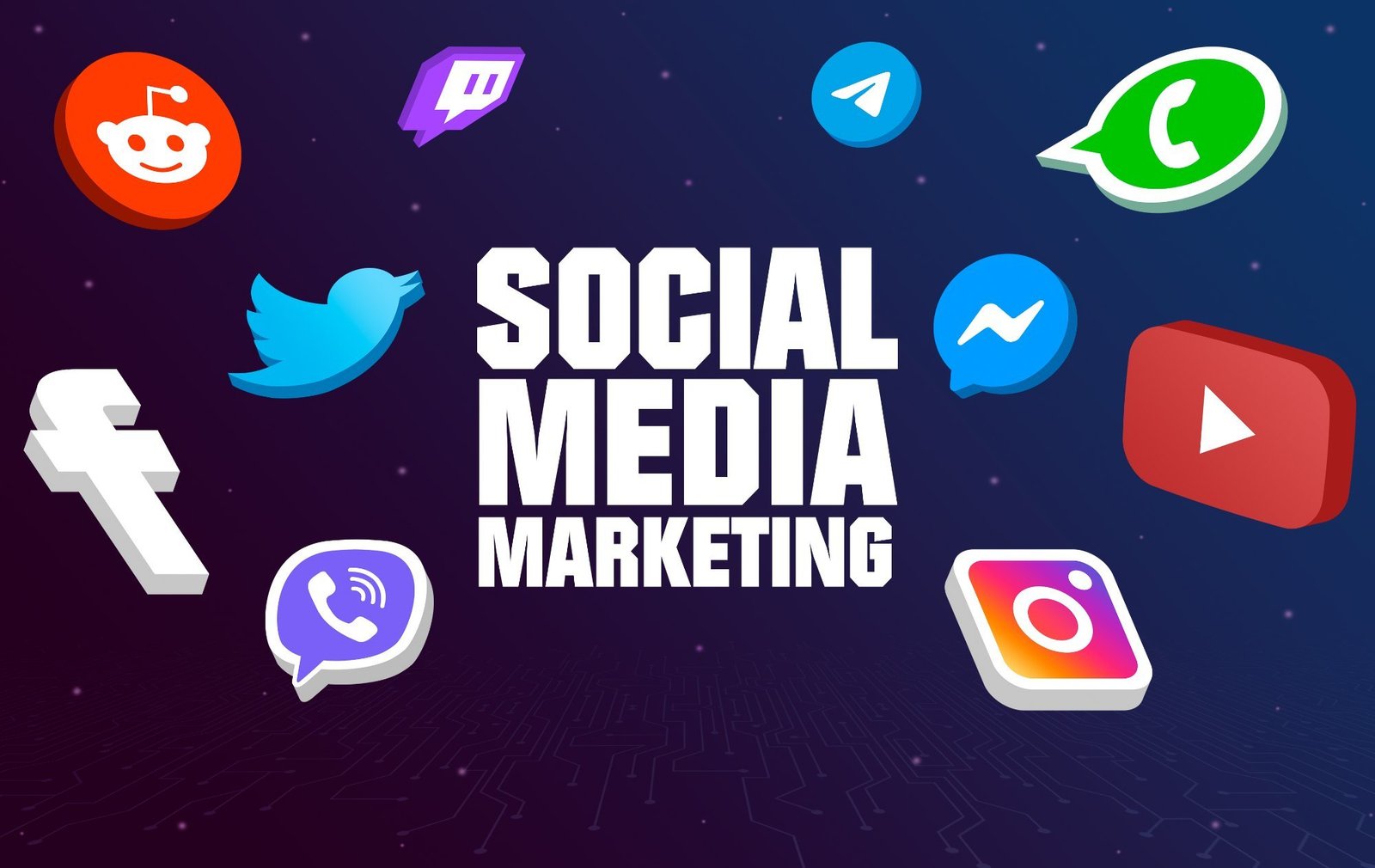Your Everything Guide to Social Media Marketing: From Strategy to Growth
Social media is a powerful digital marketing tool — it allows you to meet your target customers where they are and build meaningful relationships with them.
Users spend hours on their social platforms of choice every single day — and, most importantly, use them to discover new products and brands. While these social media platforms are primarily used to stay in touch with friends and family, a considerable proportion of users (25 percent) actively set out to find new products on Facebook, Instagram, YouTube, and other social networks — so it’s well worth your business’ time to meet these potential customers on their social channels of choice.
In this bumper guide, we’ll unpack everything you need to know about the most popular social networks for marketing (with some exclusive insights from Buffer data on each one) and social media marketing strategy. You’ll also find some resources that take a deep dive into particular areas of this increasingly important marketing arena.
What is social media marketing?
Social media marketing (SMM) is the use of social media platforms to connect with your audience to build your brand, increase sales, drive website traffic, and more. This involves publishing high-quality content on your social media profiles, listening to and engaging your followers, analyzing your results, and running social media advertisements. There are a host of options when it comes to the best social channels for your social media marketing. There is also a range of social media management tools that will help your business get the most out of its social media presence. We’ll unpack all of these things in this guide.
The evolution of social media marketing and management
In the early days of social media marketing, marketers treated the platforms available like billboards — just another outlet for advertising. Businesses simply broadcast their message to followers, hoping to drive traffic to their websites and, ultimately, sales.
But social media has become increasingly crowded, and simply showing up is no longer enough. Now, standing out means more than just publishing — it requires creating value for and meaningfully engaging with audiences.
Luckily, the evolution of these social platforms has meant there are a host of tools and tactics at your disposal to make this easy — and rewarding, too.
For example, a business concerned about what people say about its brand would monitor social media conversations and respond to relevant mentions (social listening and engagement).
A business that wants to understand how it’s performing on social media would analyze its reach, engagement, and sales on social media with an analytics tool. A business that wants to reach a specific audience at scale would run highly targeted social media ads.
All these areas make up modern social media management
Social media platforms: a quick-start guide to the major networks
Social media marketers are spoilt for choice when it comes to platforms — our guide to the top social media sites contains over 20 platforms to consider.
But, before this leaves you feeling overwhelmed, we recommend you’re selective about which networks you’re active on as part of your content marketing strategy (more on this to come).
According to 2023 data, the most-used platforms for social media marketing globally are (in order) Facebook, LinkedIn, Instagram, X (formerly Twitter), YouTube, and TikTok.
Consider several things when making this decision, but perhaps the most important is where your audience is. Here’s a high-level explainer, plus a breakdown of the demographics of the most popular social media marketing platforms to guide you:
- Monthly active users: 3.03 billion
- Breakdown by gender: 77% women, 61% men
- Dominant age group: 25 – 34 years
- 89% of organizations use it for social media marketing
Facebook is the world’s most widely used social network, boasting over 3 billion monthly active users — more than a third of the world’s global population logging in at least once a month.
Facebook supports all content types, from links and text to photos and videos — though one tends to outperform the others when it comes to engagement. We analyzed over 1 million Facebook posts and found that video (Facebook Reels) is the most engaging content format on Facebook.
YouTube
- Monthly active users: 2.5 billion
- Breakdown by gender: 46% women, 16% men
- Dominant age group: 25 – 34-year-olds
- 67% of organizations use it for social media marketing
YouTube is the original video-sharing social media platform. For many years, the Google-owned network only supported landscape videos but recently introduced portrait short-form videos up to 60 seconds, called YouTube Shorts.
YouTube offers shopping tools like YouTube Shopping (only for certain users) plus YouTube Ads, allowing you to advertise before and during other YouTube videos.
According to Buffer data, the best time to post on YouTube is on Friday between 3 and 4 p.m. Both videos and YouTube Shorts posted at those times tend to get the highest views.
- Monthly active users: 2 billion
- Breakdown by gender: 44% women, 36% men
- Dominant age group: 18 – 24 years (closely followed by 25 – 34-year-olds)
- 84% of organizations use it for social media marketing
Instagram is a highly visual platform that supports photos, carousels (multi-photo posts), Stories, Reels, and live videos.
Analyzing millions of Instagram posts sent through Buffer revealed that Reels are the best content to post on the platform for engagement.
TikTok
- Monthly active users: 1 billion
- Breakdown by gender: 24% women, 17% men
- Dominant age group: 18 – 24-year-olds
- 30% of organizations use it for social media marketing
A relatively new player in the social media marketing game, TikTok has exploded in popularity in recent years, reaching over a billion monthly active users in record time.
TikTok allows users to create and share videos 15 – 60 seconds or ten minutes long and boasts a staggering number of filters, AI effects, sounds, and music to make content creation fun and exciting. The social media platform also recently introduced Stories and carousel-style photo posts.
X (formerly Twitter)
- Monthly active users: 564 million
- Breakdown by gender: 22% women, 25% men
- Dominant age group: 25 – 34-year-olds
- 66% of organizations use it for social media marketing
Twitter, rebranded as X in 2023, was one of the earliest players in the social media game (and the very first channel Buffer supported!).
However, with changes happening on the platform in recent years, popularity on the social network does seem to be dwindling. Our analysis revealed that the number of users posting to X has declined by around 16 percent, and new users connecting X accounts have fallen by about 27 percent since January 2022.
But that doesn’t mean writing the platform off just yet. While some exciting Twitter alternatives are gaining traction now, including Bluesky, Mastodon, and Instagram’s answer to microblogging, Threads, none come close to X’s current 500 million+ monthly active users.
Like Facebook, X supports links, images, text, and video posts, but according to our analysis of over 1 million posts sent via Buffer in 2023, video is the most engaging content format on X.
- Monthly active users: 310 million
- Breakdown by gender: 26% women, 31% men
- Dominant age group: 25 – 34-year-olds
- 87% of organizations use it for social media marketing
LinkedIn has evolved from a resume-sharing platform to one of the best networks for thought leadership content and building a personal brand. From a business social media perspective, leveraging the personal brands of employees — or employee advocacy — can be a powerful digital marketing tool.
Social media marketing strategy
Effective social media marketing — and a solid return on investment — starts with a social media strategy. Before you even start thinking about content creation, it’s wise to take a step back and look at the big picture to devise your social media marketing plan. Remember: random acts of content lead to random results.
Here’s a step-by-step guide to creating your social media strategy:
- Set your social media marketing goals
- Define your target audience
- Define your content pillars
- Choose your platforms
- Create your content calendar
- Analyze your content performance
- Evaluate your content strategy
Your social media marketing strategy is not a one-and-done process — it’s a plan that should be regularly tweaked and iterated upon. So, instead of thinking of the above steps as a to-do list to move through, visualize them as a cycle, like the flywheel below.
You should be regularly tweaking and building on your strategy to hit your goals.



